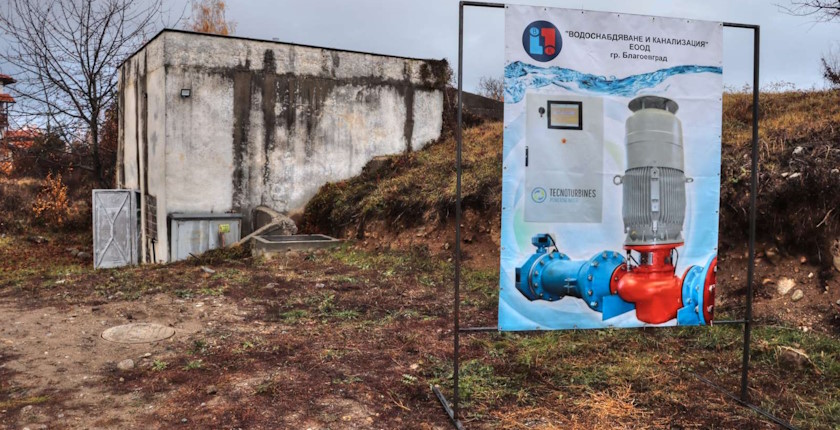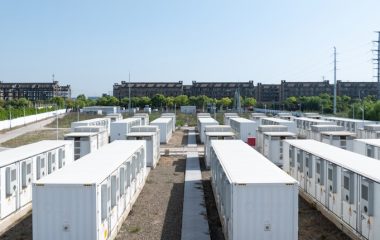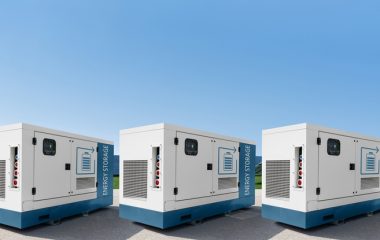
Photo: Municipality of Bansko
The Blagoevgrad branch of Bulgarian Water Supply and Sewerage Holding produces electricity using a miniature hydroelectric turbine in its waterworks pipeline. Such devices utilize excess pressure in the network.
In-pipe hydropower systems could play a part in decarbonization and energy efficiency as they are simple and don’t harm the environment. In Blagoevgrad, the waterworks and sewerage firm, operating within state-owned Bulgarian Water Supply and Sewerage Holding – Bulgarian W&S or ViK Holding put one into operation within a water supply line.
It is the first such device in the country. The 18 kW system is in a pipe bringing drinking water to Bansko from above the town, known for the local ski resort.
Water utilities are among biggest electricity consumers in Bulgaria
The holding’s top management and municipal and regional officials attended the inauguration. Bulgarian Water Supply and Sewerage Holding encourages its subsidiaries to invest in green energy technologies, board member Atanas Boyadzhiev pointed out. He noted that water supply utilities are among the biggest electricity consumers in Bulgaria.
Chairman of the Supervisory Board Gancho Dimitrov said the young engineering and management generation needs to tackle the water supply issues that piled up in recent decades and to make maximum use of opportunities to produce green energy from water.
The in-pipe micro hydropower generator utilizes excess pressure in the supply pipe carrying water to the tank. Otherwise, the overpressure would be released in the form of heat through a valve and wasted.
Holding to sell its in-pipe hydropower in market
The holding’s W&S Energy Group is responsible for selling the electricity in the market.
Hydropower systems in pipes range from as little as 10 W to 100 kW. They have been installed in numerous locations from California and Oregon to Scotland and Hong Kong. For example, the city of Boulder in Colorado introduced eight units in 1985.
In-pipe hydropower makes the most sense if it uses gravity. Miniature turbines can also work in drainage networks, wastewater lines or in return water piping of large air conditioning systems.
Another advantage is that housing associations and firms can use the technology and potentially become prosumers.
Notably, Turkish state-owned company Temsan has designed a compact and foldable hydropower system. Its capacity is as low as 500 W.









Be the first one to comment on this article.